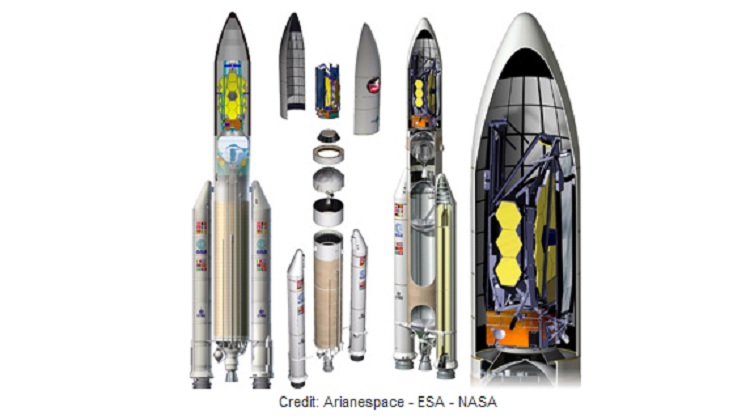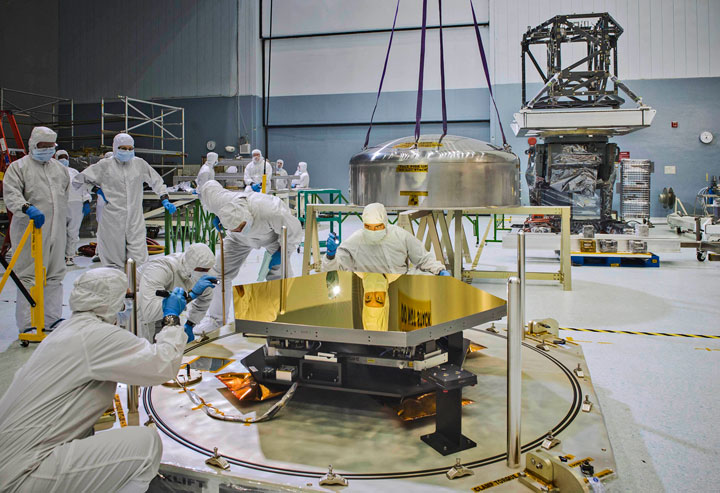
Photo Credit and Caption: NASA/Chris Gunn
At NASA’s Goddard Spaceflight Center in Greenbelt, Md., in a 1.3-million-cubic-foot clean room, now rests all 18 gold-coated primary mirror segments for NASA’s James Webb Space Telescope—the successor to the space agency’s aging Hubble Space Telescope. All four of the telescope’s science instruments are being kept within walking distance of the mirrors, and now—with four years to launch—technicians at Goddard are ready to assemble what will become the most powerful space telescope ever built.
“The Hubble Space Telescope has already rewritten the science books. Going from Hubble to the James Webb Space Telescope is like going from a biplane to the jet engine,” said Maryland Senator and Chairwoman of the Senate Appropriations Committee Barbara Mikulski at a news conference held at Goddard on Feb. 3. “As Chairwoman, I’ve continued to fight for funds in the federal checkbook to keep the James Webb Space Telescope mission on track, supporting jobs today and jobs tomorrow at Goddard. NASA Goddard is home to leaders in Maryland’s space and innovation economies, making discoveries that not only win Nobel Prizes, but create new products and jobs. The James Webb Space Telescope will keep us in the lead for astronomy for decades to come, spurring the innovation and technology that keep America’s economy rolling.”
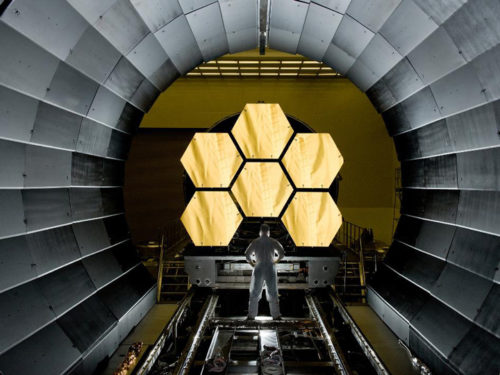
With most of the major hardware now under one roof, assembly of the massive space-based observatory is expected to begin as soon as the telescope’s structure arrives at Goddard, with assembly expected to be completed in 2016. Once complete, Webb—with its 69.5 ft x 46.5 ft instruments-protecting sunshield deployed—will be the size of a Boeing 737 airplane. Hubble, in comparison, is about the size of a large tractor-trailer truck or bus. Webb’s 6.5-meter diameter primary mirror will also be bigger, much bigger. The telescope will have nearly seven times more light collecting area than Hubble, allowing for unprecedented infrared observations of distant objects from the dawn of the universe some 14 billion years ago. Its mirror and instruments will capture images of the universe and break down the spectra of incoming light to analyze the properties of galaxies, stars, and the atmospheres of planets beyond our Solar System.
“The recent completion of the critical design review for Webb, and the delivery of all its instruments to Goddard, mark significant progress for this mission,” said NASA Administrator Charles Bolden. “The design, build, delivery and testing of these components took meticulous planning and action here at Goddard and with teams across the country, as well as with our international partners. It’s very exciting to see it all coming together on schedule. And I want to thank our good friend Senator Barbara Mikulski for her support. We wouldn’t be here today without her championing of this critical capability for NASA. I know she understands just how important it is to continue to push the boundaries of what we can do in space.”
A joint project between NASA, the European Space Agency (ESA), and the Canadian Space Agency (CSA), Webb will have been in planning, design, and development for over 20 years when it is launched atop an Ariane-5 rocket from Arianespace’s ELA-3 launch complex at the European Spaceport located near Kourou, French Guiana, in 2018.
“This past year has been one of significant progress for the Webb telescope,” said Goddard Director Chris Scolese. “The NASA Goddard team is working tirelessly with our partners to keep the program on track as we develop this newest scientific tool to explore the universe.”
The program has not been without its own share of problems and was nearly cancelled by the United States House of Representatives’ appropriations committee on Commerce, Justice, and Science in 2011, citing “billions of dollars over budget and plagued by poor management” as the reasoning behind killing the program. Congress, however, reversed the cancellation plans and instead capped additional funding to complete the project at $8 billion—four times more expensive than originally proposed, with a new launch date at least seven years later than originally planned.
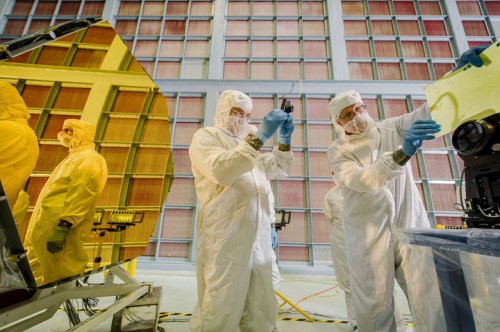
Credit: NASA/Chris Gunn
Just a couple weeks ago Webb passed its first significant mission milestone for 2014: a Spacecraft Critical Design Review (SCDR) that examined the telescope’s power, communications, and pointing control systems. The week-long review by an independent panel of experts involved extensive discussions on all aspects of the spacecraft—details, designs, construction and testing plans, and the spacecraft’s operating procedures were all reviewed in an effort to ensure the plans to finish construction would result in a vehicle that enables the powerful telescope and science instruments to deliver their unique and invaluable views of the universe.
“This is the last major element-level critical design review of the program,” said Richard Lynch, NASA Spacecraft Bus Manager for the James Webb Space Telescope at NASA’s Goddard Space Flight Center in Greenbelt, Md. “What that means is all of the designs are complete for the Webb and there are no major designs left to do.”
“While the spacecraft that carries the science payload for Webb may not be as glamorous as the telescope, it’s the heart that enables the whole mission,” added Eric Smith, acting program director and program scientist for the Webb Telescope at NASA Headquarters in Washington. “By providing many services including telescope pointing and communication with Earth, the spacecraft is our high tech infrastructure empowering scientific discovery.”
“Having the final mirror segments at Goddard is an exciting program milestone. It’s the culmination of more than a decade of advanced optics manufacturing and testing work by teams of extremely dedicated engineers, technicians and scientists,” added Smith. “These mirrors are ready to meet up with the structure that will hold them incredibly stable, forming Webb’s 6.5-meter-diameter primary mirror — the largest space telescope ever built.”
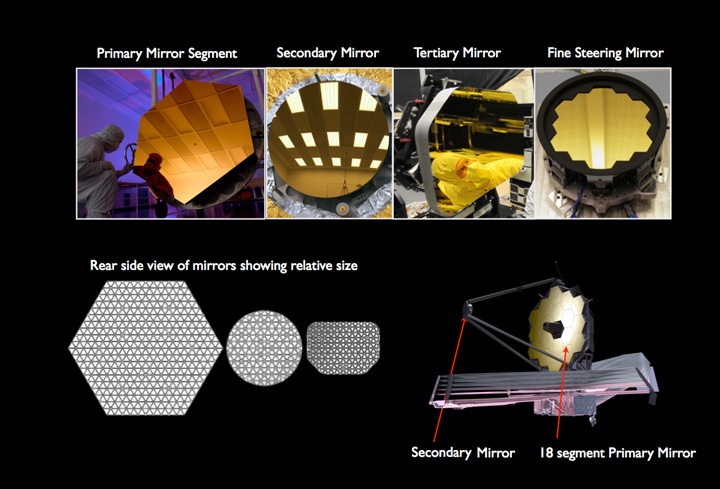
a primary mirror segment, the secondary mirror, tertiary mirror, and the fine steering mirror. The bottom right shows an artist’s conception of the Webb telescope optics with its 18 primary mirror segments. On the bottom row are the three different mirror segments shown on the same scale and seen from the rear to illustrate the honeycomb structure that makes this mirrors both very light and mechanically stiff.
Credit: NASA/Ball Aerospace/Tinsley
The gold-coated, flight-ready mirrors, built by Ball Aerospace and Technologies Corporation in Boulder, Colo., began arriving at Goddard in the fall of 2012. The mirrors were shipped in custom-made containers designed specifically for the multiple cross-country trips the mirrors made through eight states during manufacturing. Each container is hermetically sealed to handle atmospheric pressure changes caused by shipping from high elevations, such as from Ball Aerospace in Boulder to locations at or near sea level such as Goddard Spaceflight Center in Greenbelt, Md.
The odd “look” of the hexagonal mirrors, with 18 mirror segments making up one giant primary mirror, was an intentional design. There is no rocket in the world large enough to loft a 6.5-meter mirror into space, at least not in one piece. The 18 mirror segments can be folded up to fit into the launch vehicle and then unfold after launch, and once in space the segments will work together as a single large mirror.
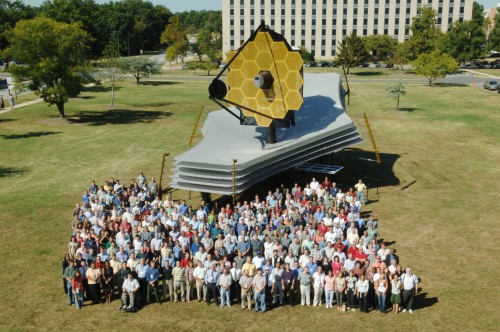
Putting Webb into position for its observations is one thing, but getting the giant segmented mirror to focus on galaxies millions, even billions, of light-years away is another challenge all together. In order to ensure Webb achieves a single perfect focus, engineers will use six tiny mechanical motors, or actuators, attached to the back of each mirror piece to capture the images they expect Webb to produce.
“Aligning the primary mirror segments as though they are a single large mirror means each mirror is aligned to 1/10,000th the thickness of a human hair,” said Lee Feinberg, Webb Optical Telescope Element Manager at NASA’s Goddard Space Flight Center. “What’s even more amazing is that the engineers and scientists working on the Webb telescope literally had to invent how to do this.”
Another problem with “traditional” telescope mirrors is the fact that they are heavy. If Webb’s mirror was made same as the Hubble, then it simply could not be launched. To get around this problem, the team at Northrop Grumman (the company that is leading the effort to build Webb) decided to make Webb’s mirrors from Beryllium, which is a very strong but light metal. In order for the telescope’s instruments to function properly, the observatory also needs to be kept very cold, -400 degrees Fahrenheit cold, and Beryllium holds its shape at those cryogenic temperatures and is a good conductor of electricity and heat.
Gold coats the finished mirrors and is used to improve the mirror’s reflection of infrared light.
A detailed explanation of the four science instruments that will help the JWST carry out its mission can be read about HERE.
ITT (formerly Kodak) will combine the 18 segments into one big mirror at Goddard once the mirror backing structure, built by ATK in their facility in Salt Lake City, Utah, is delivered. ITT will mount the mirror segments onto their proper place on the backing structure, which holds 12 segments in the middle part of the mirror and has two wings with three segments each (it’s these wings that fold back so that the full mirror will fit into the payload fairing atop the Ariane-5 rocket).
Want to keep up-to-date with all things space? Be sure to “Like” AmericaSpace on Facebook and follow us on Twitter: @AmericaSpace
BELOW: Various photos documenting the progress of the James Webb Space Telescope’s development.
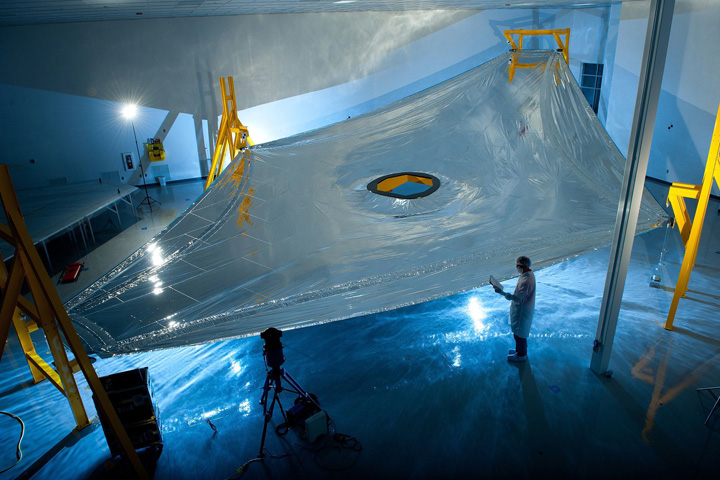
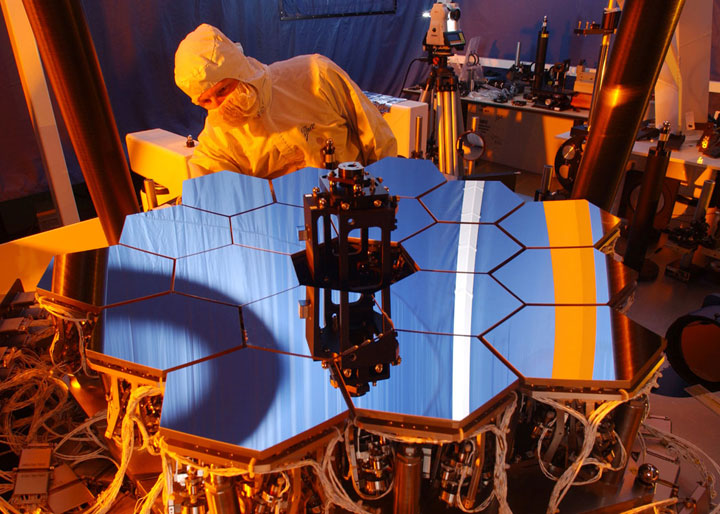
Credit: NASA

Credit: NASA
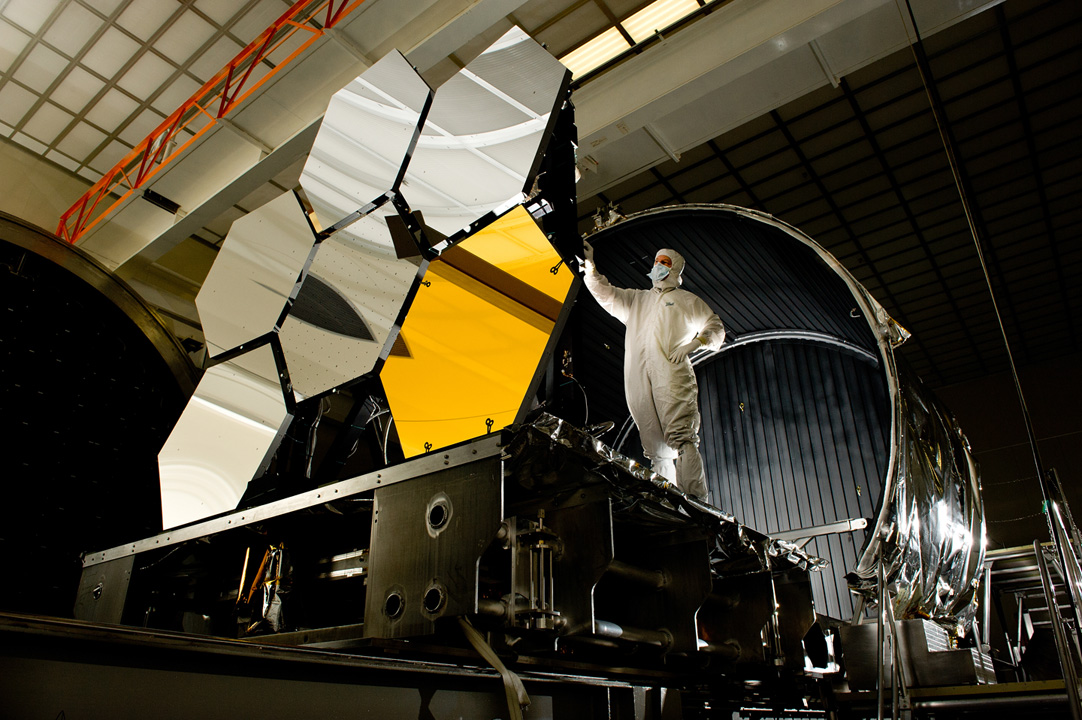
Credit: NASA/MSFC/David Higginbotham
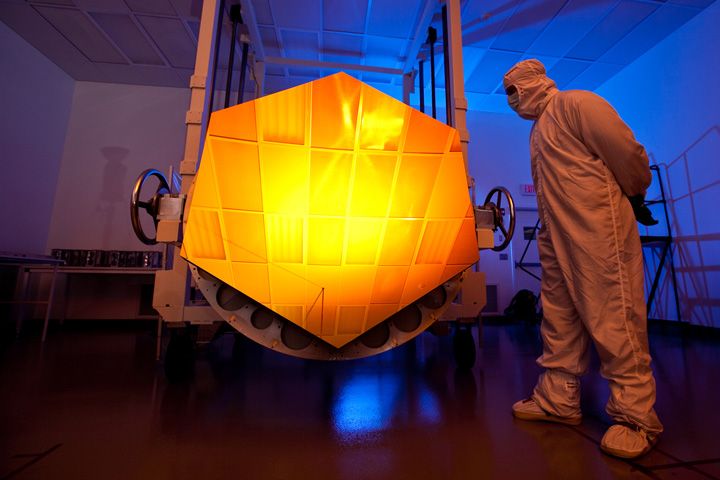
Credit: Photo by Drew Noel
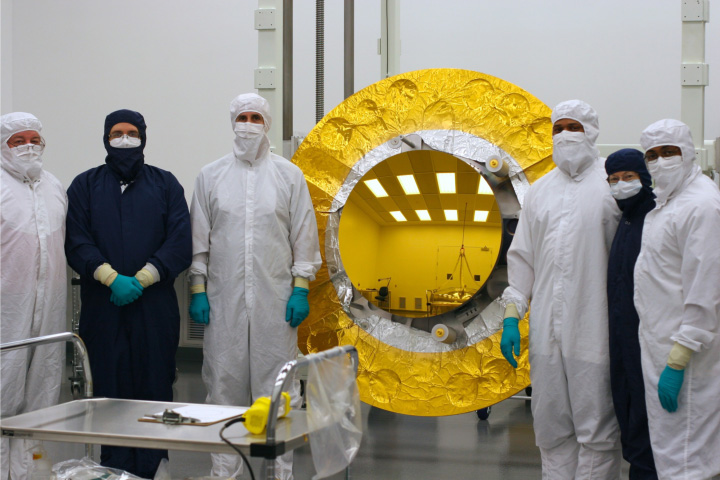
Credit: Ball Aerospace
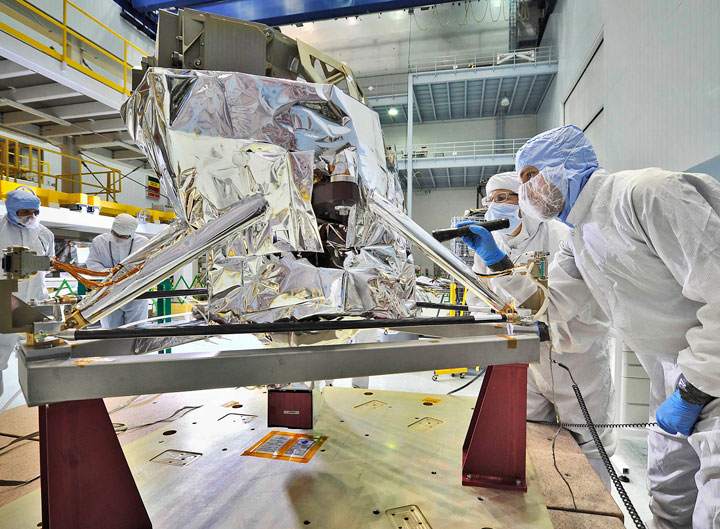
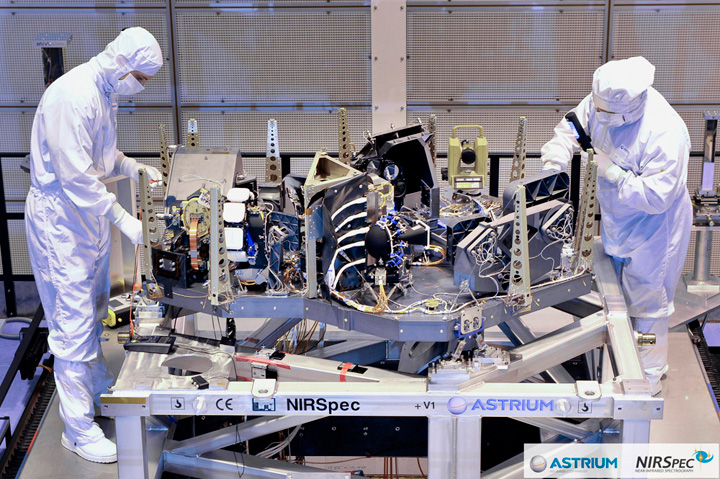
Credit: Astrium/NIRSpec
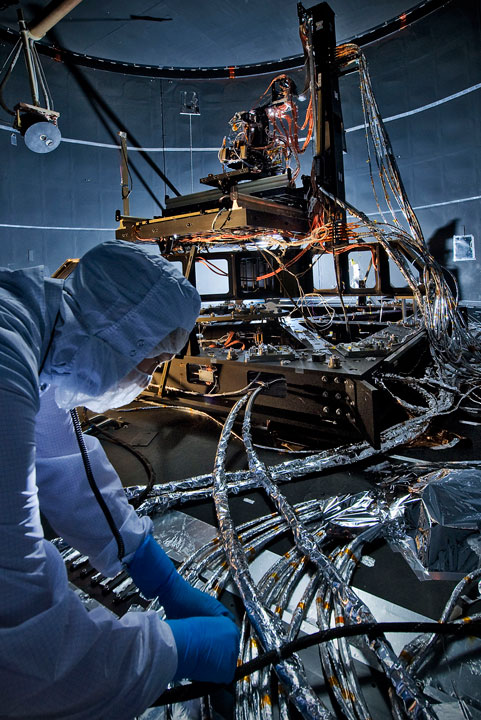

Image Credit: ATK
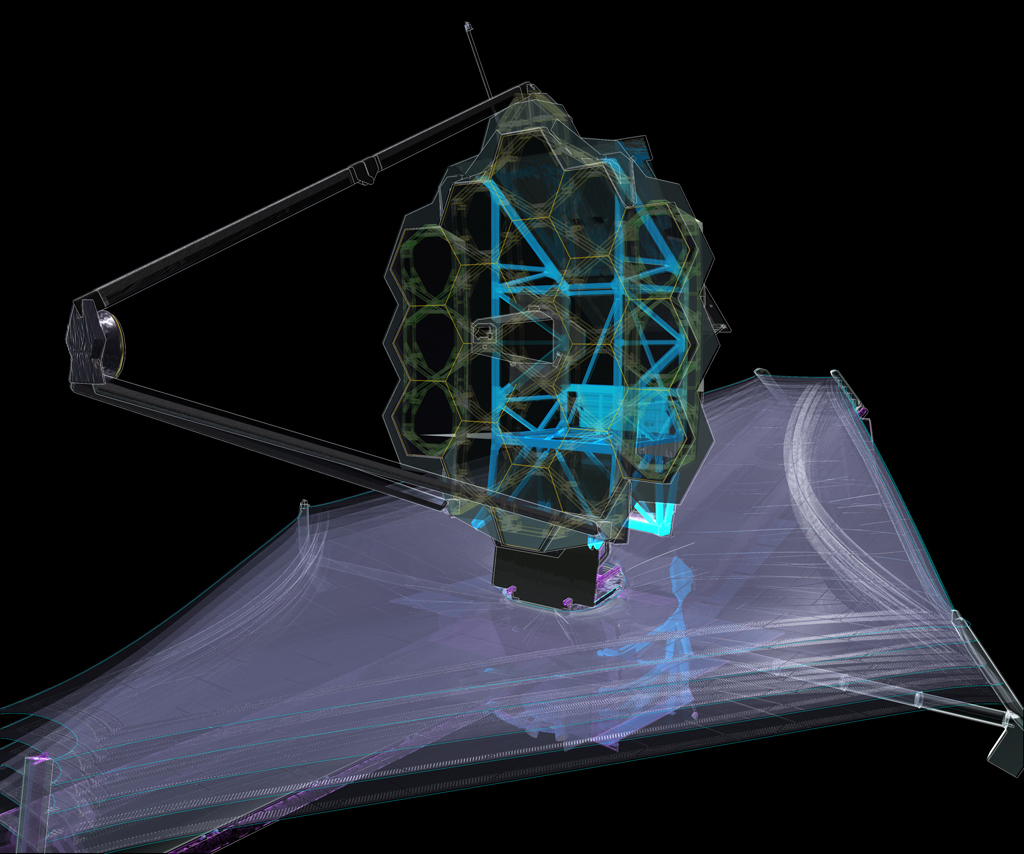
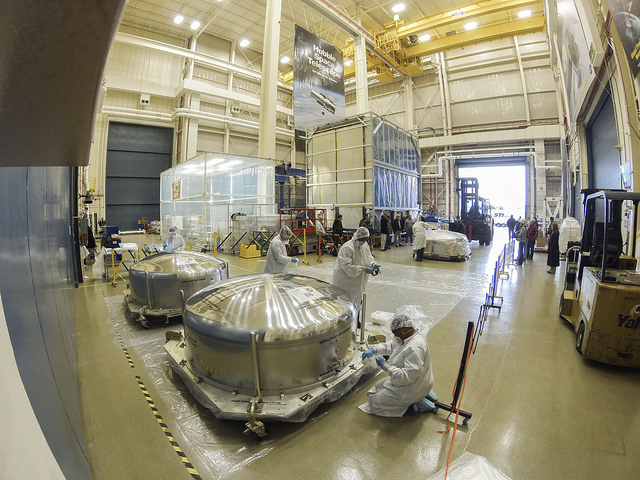
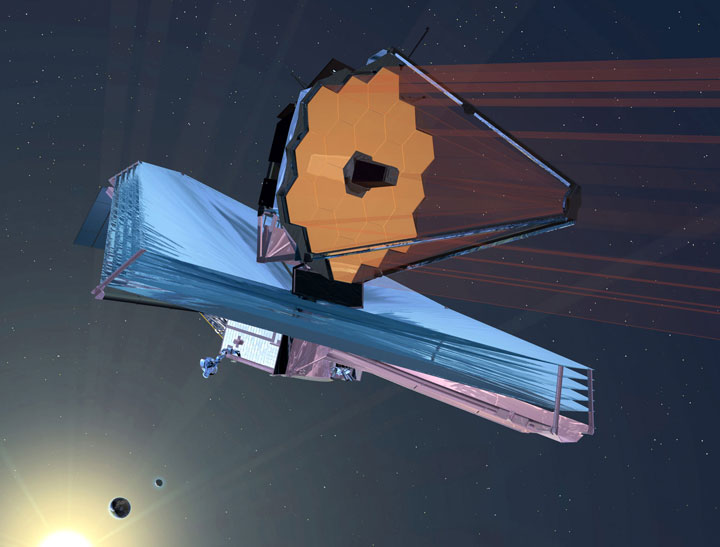
Credit: NASA
Missions » James Webb Telescope »




